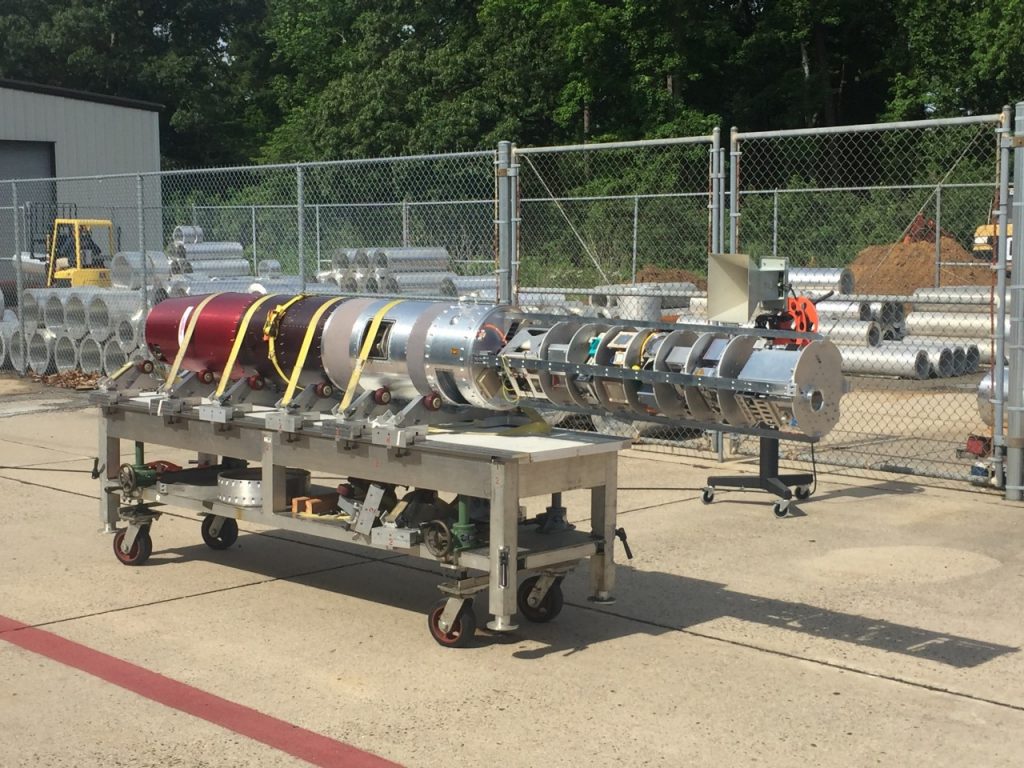
By Jama Green
On the Eastern Shore of Virginia, a sounding rocket was recently launched into space at the NASA Wallops Flight Facility. Among the Terrier-Improved Malemute’s cargo was projects developed by undergraduate students from eight community college and university teams, including Virginia Tech, as part of the national RockSat-X program.
VT undergraduate student teams, faculty advisors, and family were on hand for the countdown and the launch.
The projects aboard the rocket this year were a mix of technology and science experiments, including the development of a 360-degree camera for use on sounding rockets, space debris removal concept,; and collection of particles in space for research on the origins of life.
Among these experiments was a solar array deployment system for CubeSats, developed by the RockSat-X team at Virginia Tech.
Three years in the making, the RockSat-X team has been developing a CubeSat form factor, deployable solar array to enhance power generation capabilities on university CubeSat projects.
These small satellites, 10 by 10 by 10 centimeters in size, are typically equipped with solar panels on several faces of the cube, but have power limitations due to the size of the panels and intended short-term length of mission. Using a series of scissor joints on a deployable extending arm, Virginia Tech’s 1U CubeSat is testing the viability of a design that exposes additional solar cells, enabling future CubeSat experiments to take on more power-demanding missions.
This particular experiment dates back to the 2018-19 academic year, and the team has experienced numerous hurdles throughout the way. During that first year, the project was deemed not mature enough at the time of the design review process, leading them to miss out on a coveted spot on the rocket that summer. The team continued to refine their payload and passed the design review the following year, only to see countless delays of the launch caused by the global COVID-19 pandemic.
“At this point in time, I have put an absurd amount of time into this project,” said Eric Williams, a senior majoring in mechanical engineering. “The team continued to forge ahead each time the launch was delayed, and tried to stay on track working off-campus during the pandemic. There are both feelings of elation and relief that it finally made it into space, given all the craziness of the project from start to finish.”
After flying to around 91 miles altitude, the payload with the experiments descended by parachute and landed in the Atlantic Ocean, about 64 miles off the Virginia coast approximately 15 minutes after launch. As a fail-safe, the RockSat-X team deployed two methods for data collection. The team installed a laser range finder on the deck plate to measure how far the solar panels moved from their base position and voltage/current sensors to measure power generation, saving the data to the payload’s internal storage. They also sent the voltage and current sensor data through a telemetry system on the rocket that downlinked to the NASA Wallops ground station.
Virginia Tech has participated in the national RockSat-X program since 2008 and has seen nine previous projects launched into space or near space, according to faculty advisor Kevin Shinpaugh, professor in the Kevin T. Crofton Department of Aerospace and Ocean Engineering. Approximately 30 undergraduates from across the College of Engineering have been involved with the RockSat-X deployable solar panel array experiment since the project’s inception in 2018.


